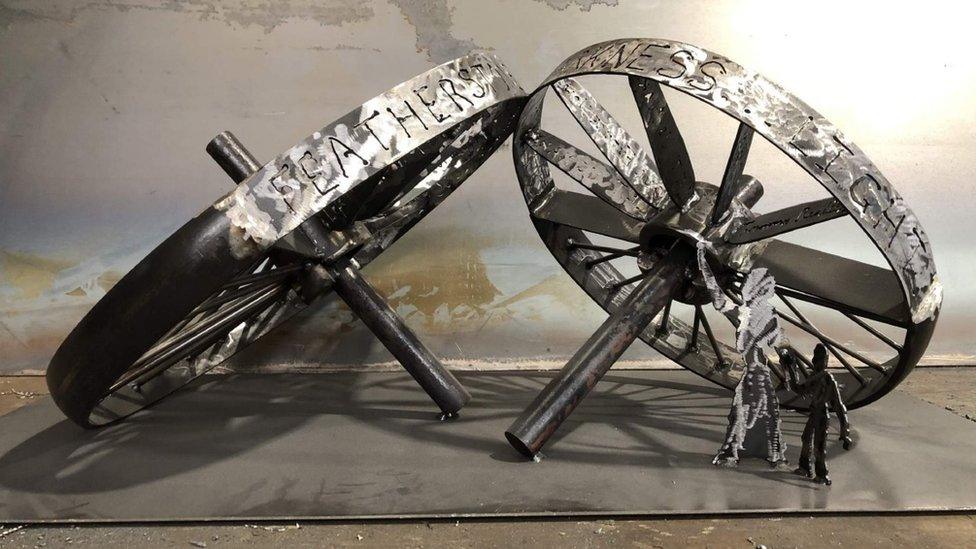Sculpture honouring town mining heritage unveiled
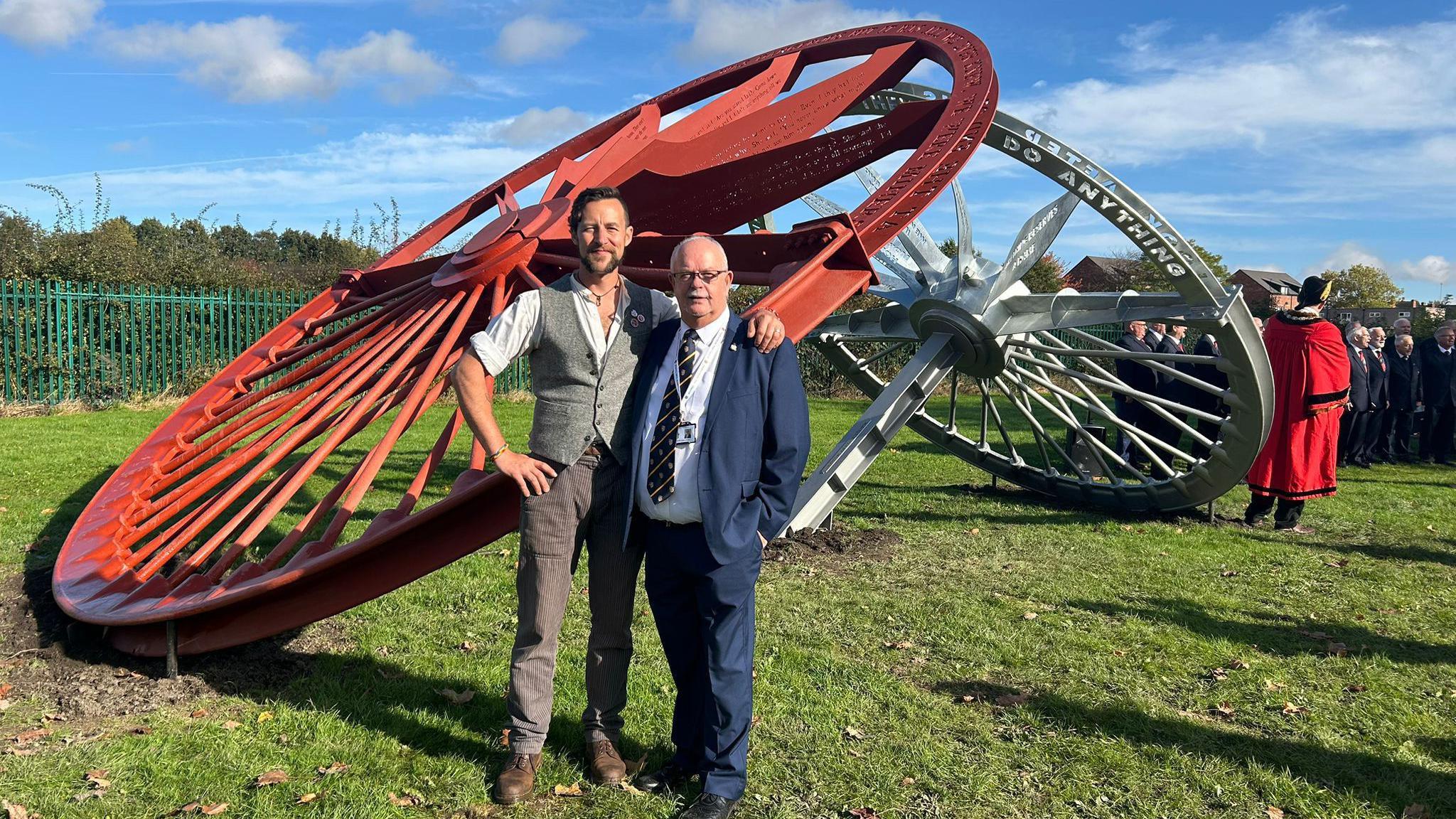
Artist Luke Perry (l) worked with Stephen Vickers and other councillors on the creation of the sculpture
- Published
A 13ft (4m) sculpture made from two decommissioned pit wheels has been unveiled in a West Yorkshire town to celebrate its rich coal mining heritage.
The 2.5 tonne structure on Wakefield Road in Featherstone, Wakefield, was made by artist Luke Perry and stands near the site of one its former collieries.
The Hope and Heritage sculpture features one wheel painted red and the other in galvanised steel, with both laser cut with text written by members of the local community.
It was unveiled during a ceremony held in memory of veteran councillor Graham Isherwood, who died this week.
His friend and fellow councillor, Stephen Vickers, said: "It was Graham's idea - he sourced two halves, both different sizes, always with the view of engaging an artist to add to and to give their interpretation of what Featherstone mining heritage was all about."
The sculpture also looks to the future, the councillor said, with local schoolchildren involved in the text and a theme of renewable energy also touched upon.
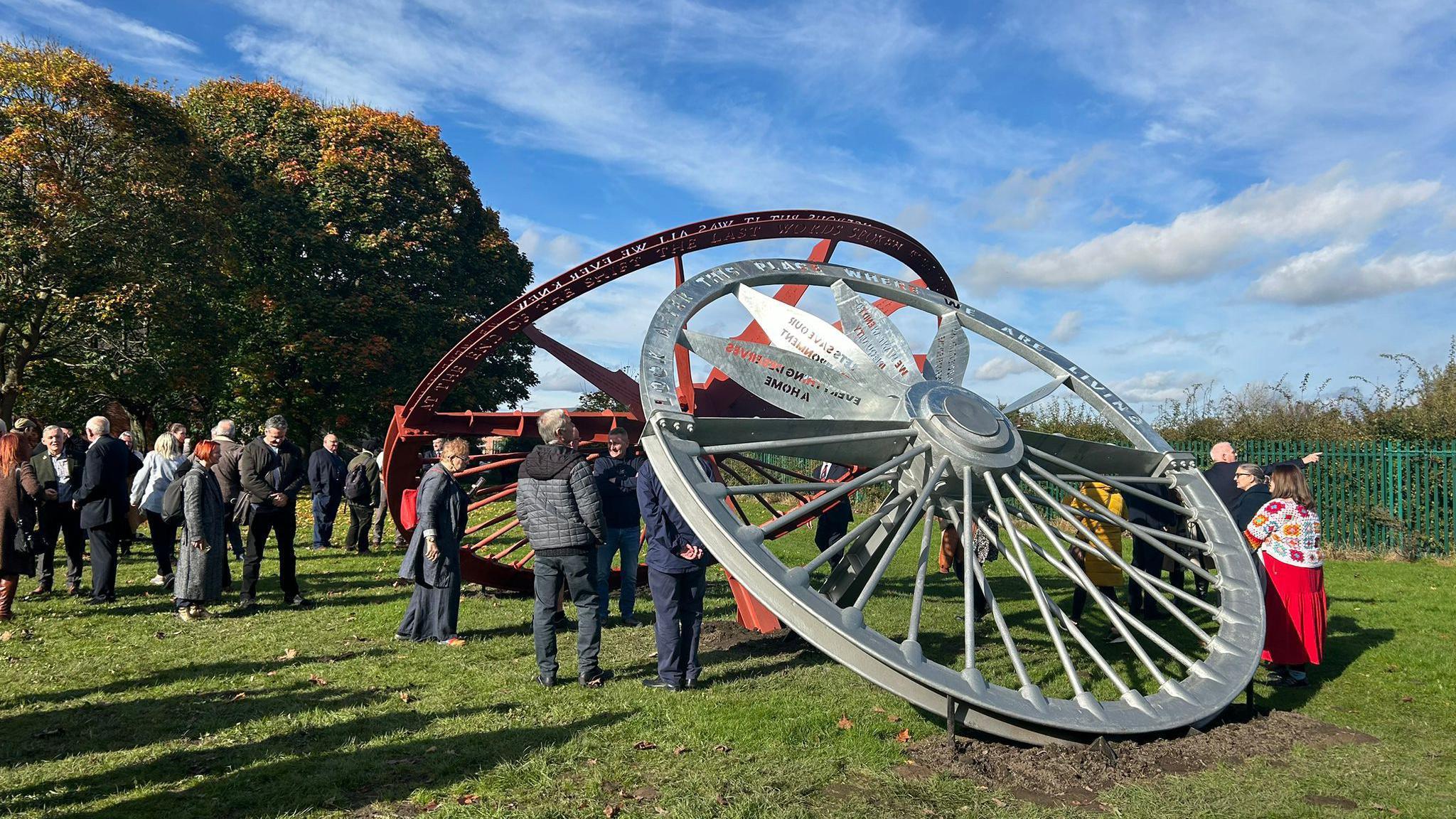
Hundreds of people attended the unveiling on Wakefield Road in Featherstone
"Luke came up with this fantastic idea of sculpting the blades on the other half of the wheel to replicate wind sails," he said.
"The finished article says it all, it's brilliant."
Mr Perry said using the pit wheels in the artwork gave him the opportunity to do something "really interesting".
"There are a lot of coal mining sculptures across the UK, but I don't think there is one that is even remotely like this, and that's something to be proud of," he said.
"One wheel is all about the living history from people that were part of the pit, and the other wheel, the hope wheel, includes interviews with young people and what they hope for the future."
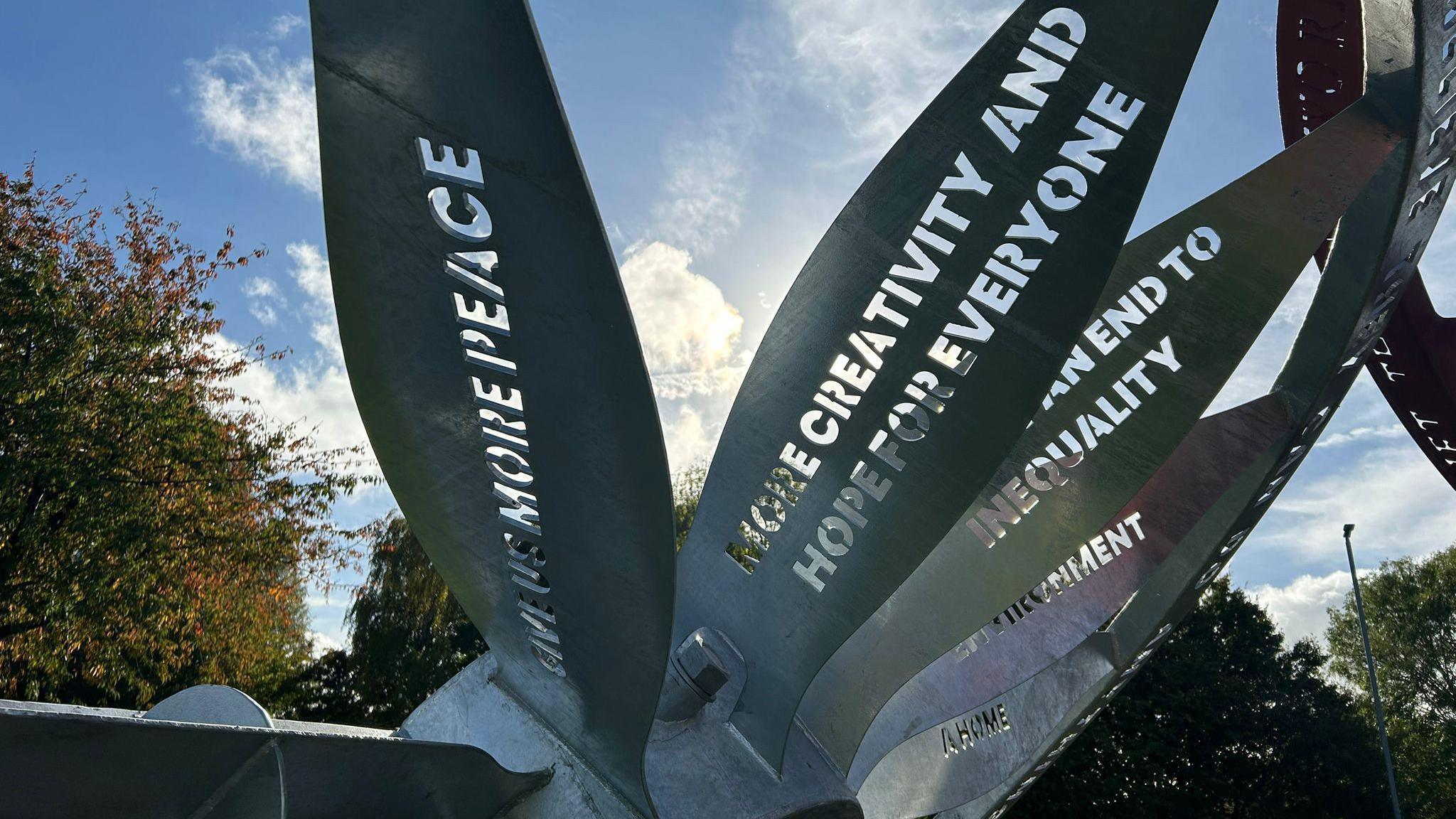
The silver wheel features the words of local children writing about their hopes
Hundreds of people gathered at the site, opposite Aldi supermarket, on Friday for the unveiling, including local schoolchildren, councillors and members of the public.
Featherstone Male Voice Choir performed songs including Working Man, a tribute to miners by The Dubliners.
Councillor Dwain Longley, Featherstone's mayor, said the sculpture was "a long time coming" as its creation was interrupted by the Covid-19 pandemic.
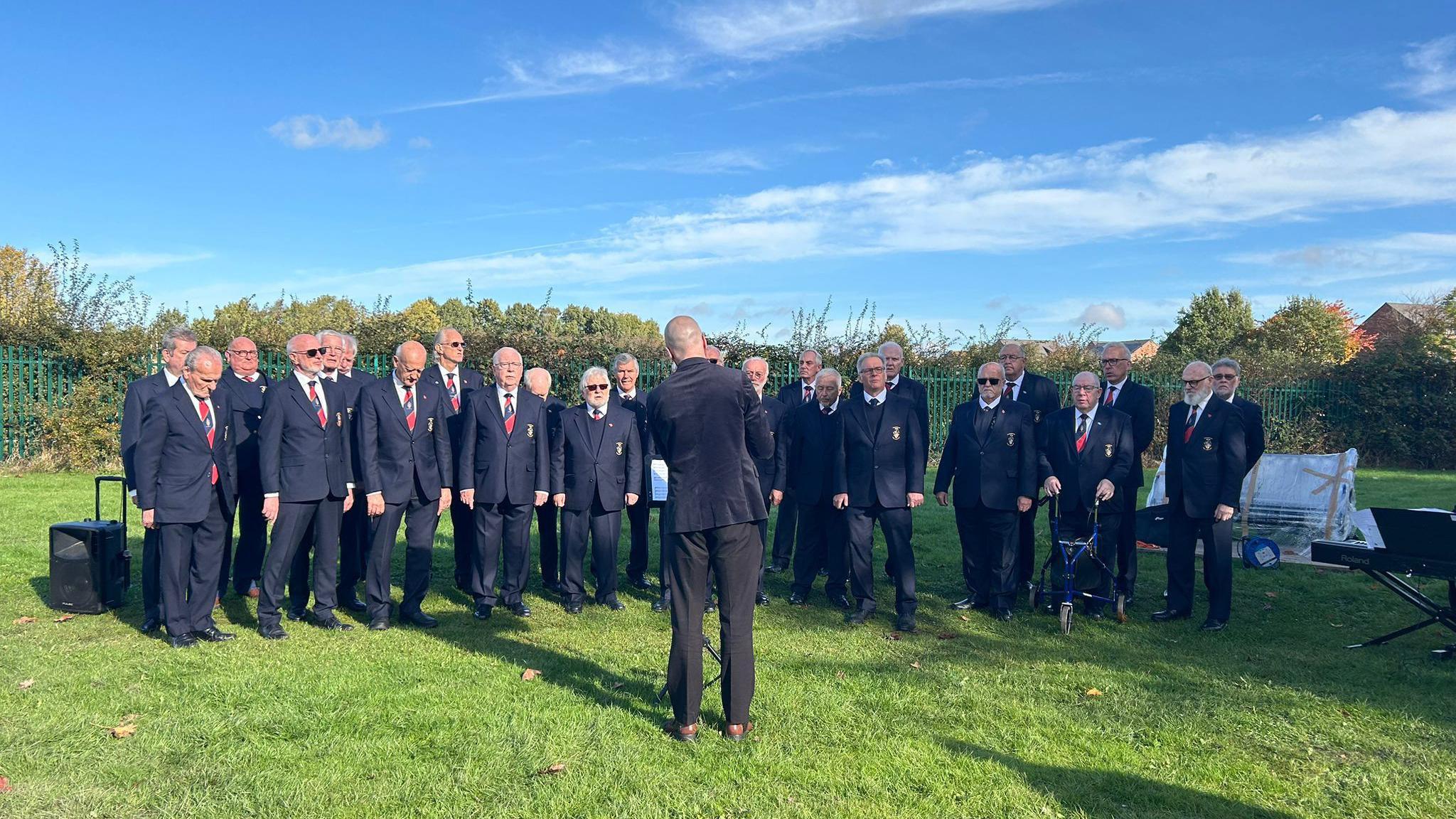
Featherstone Male Voice Choir performed at the event on Friday
"Graham was one of the driving forces behind this," he said.
"One of the two half wheels is original to the colliery that was at Featherstone - that was all down to Graham and his persistence and his contacts in the mining industry."
He continued: "It is a legacy for the town and a legacy for Graham.
"It helps to show where we have come from and it helps to shape the future."
Listen to highlights from West Yorkshire on BBC Sounds, catch up with the latest episode of Look North or tell us a story you think we should be covering here, external.
Related topics
Related stories
- Published19 January 2024
